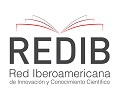Peer Review Process
Peer Review Process
The evaluation of articles, in addition to being organized through the Open Journal System (OJS), follows these procedures:
The co-director and Editorial Board control aspects related to both compliance with the protocols for article writing and their suitability to the contents of the journal. If the article complies with these protocols, the editorial secretaries register the date of receipt of the article and send it to two external referees selected from the Permanent Advisory Committee who evaluate according to the principle of double-blind review (the reviewer does not know the author and the author does not know their reviewers). Maximum time: 30 days.
In the evaluation of articles, the two external referees selected from the Permanent Advisory Committee follow the following criteria included in the Guide provided by the journal (available here): significance (originality of the work and relevance in relation to the area of concern of the journal), presentation (conceptual and expressive clarity), state of the art (knowledge and citation of other relevant research on the topic), evidence (articulation between methodology, data and analysis, relevance and sufficiency of the data in relation to the conclusions), reasoning (solidity of logic, arguments, inferences and interpretations), theory (adequacy, soundness in the use and appropriation). The verdict of the referees includes three possibilities: article approved for publication without modifications, article subject to partial modifications for eventual publication, article rejected.
If the article is accepted by both external referees, the editorial secretaries communicate to the author whether or not changes are required. When the author submits the corrected text, the editorial secretaries forward the version to the same two external referees (this date is recorded as "Submission with revisions"). If they approve the new version, they note the corresponding "Acceptance date" and communicate the decision to the author, who, upon being notified, must send the rights transfer note. If the article is rejected, the editorial secretaries communicate the decision to the author. In all cases, the author has access to the report. When an article has one evaluation approving publication, with or without modifications, and another rejecting it, it is the editor-in-chief who makes the final decision.
The response to authors regarding the acceptance or rejection of their work depends on the referees' timelines, which will not be less than forty days or more than sixty. In any case, between the receipt and communication of the double external referee's verdict, no more than three months will pass.
Translations, interviews, reviews, and articles in the Archive and Submissions sections are subject to the Editorial Board's review.
The ultimate scientific and legal responsibility for what is published in El taco en la brea lies with the director.




















